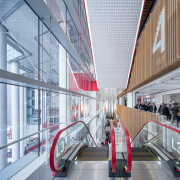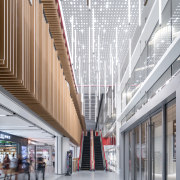Reconsidering key design aspects gives this mega mall a newly invigorated external presence
A mega mall, fallen from grace due to changing retail trends, is reworked with fresh circulation and entrances – the result is a dramatically reinvigorated thriving retail and dining hub
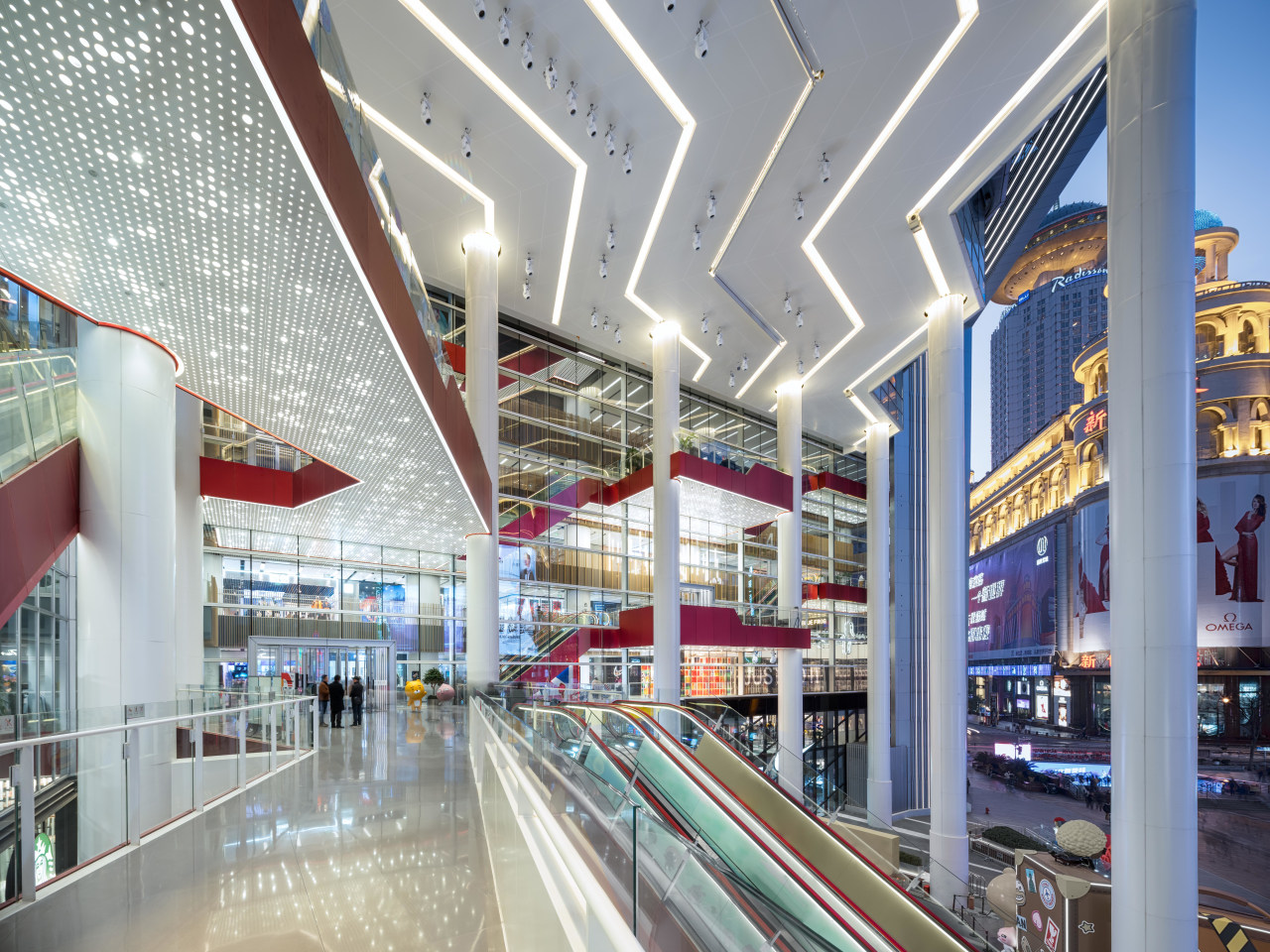
The greenest building is one already built – a truism often touted in regard to renovation projects.And greenest also often means ‘most economical’ – particularly when considering a mega mall with falling attendance and yet great forward potential.
After success in other China mall projects, architectural company Kokaistudios has now brought its expertise in shopping mall renovation to China’s increasingly lifestyle-driven retail scene.
Kokaistudios principal architect Andrea Destefanis says the firm has dramatically – even theatrically – reinvented Shimao Festival City in Shanghai.
“This project demonstrates how by expanding a dated mall’s functionality and reconsidering its circulation, such a sizeable, valuable structure can be reabsorbed by the city as a useful, even thriving public space for retail, dining and entertainment.”
Built in 2006, Shimao Festival City is a modern monument of Shanghai. Comprising retail, hotel and office space, it is located at the top of Shanghai’s renowned East Nanjing Road shopping street, with views across nearby People’s Square. But despite its prime location, the mall had become overlooked by residents in favour of venues more clearly aligned with a contemporary city lifestyle.
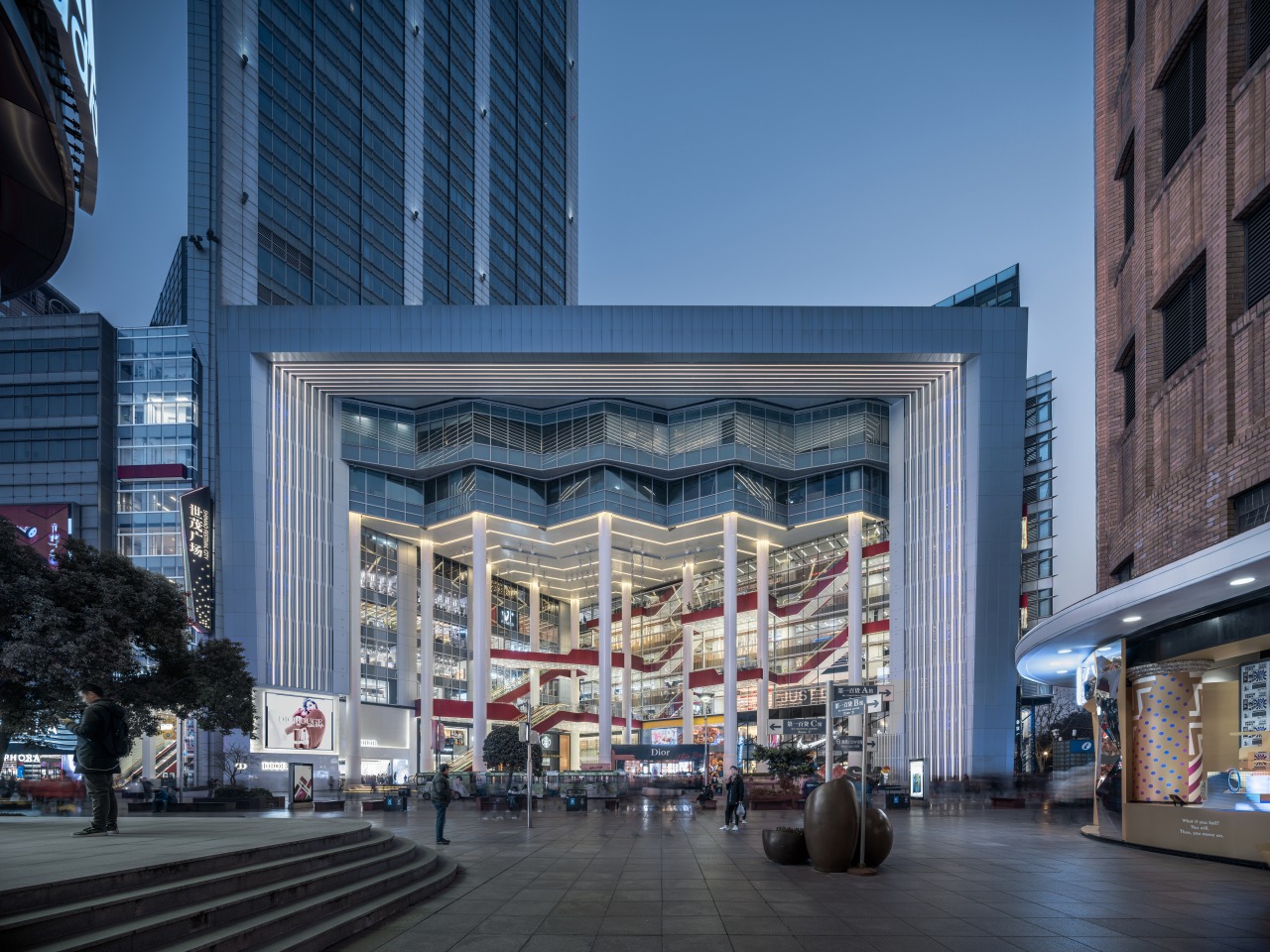
“Kokaistudios was tasked with upgrading the pre-existing retail component of Shimao Festival City,” says Destefanis.
“By reconfiguring circulation inside and outside the facility, identifying clear pathways according to visitor type, and creating openness and space, the reworked mall has helped reinvigorate a prime corner of Shanghai real estate.
“In addition, this comprehensive makeover has placed the mall firmly on the radar of both residents and tourists – reconnecting it to the city.”
Kokaistudios’ design concept is a theatre, and the renovation centres on the pedestrian flow of three distinct identified user groups – tourists, audience (think local residents) and actors (or office workers), with areas of the mall imagined as the foyer, auditorium, and backstage of a theatre.
“Starting from outside, an external ‘red carpet’ guides visitors along a sky escalator extending from Nanjing Dong Lu to a third-floor balcony and podium entrance space. From here, visitors may access a second external escalator, taking them to another covered balcony on the fifth floor.”
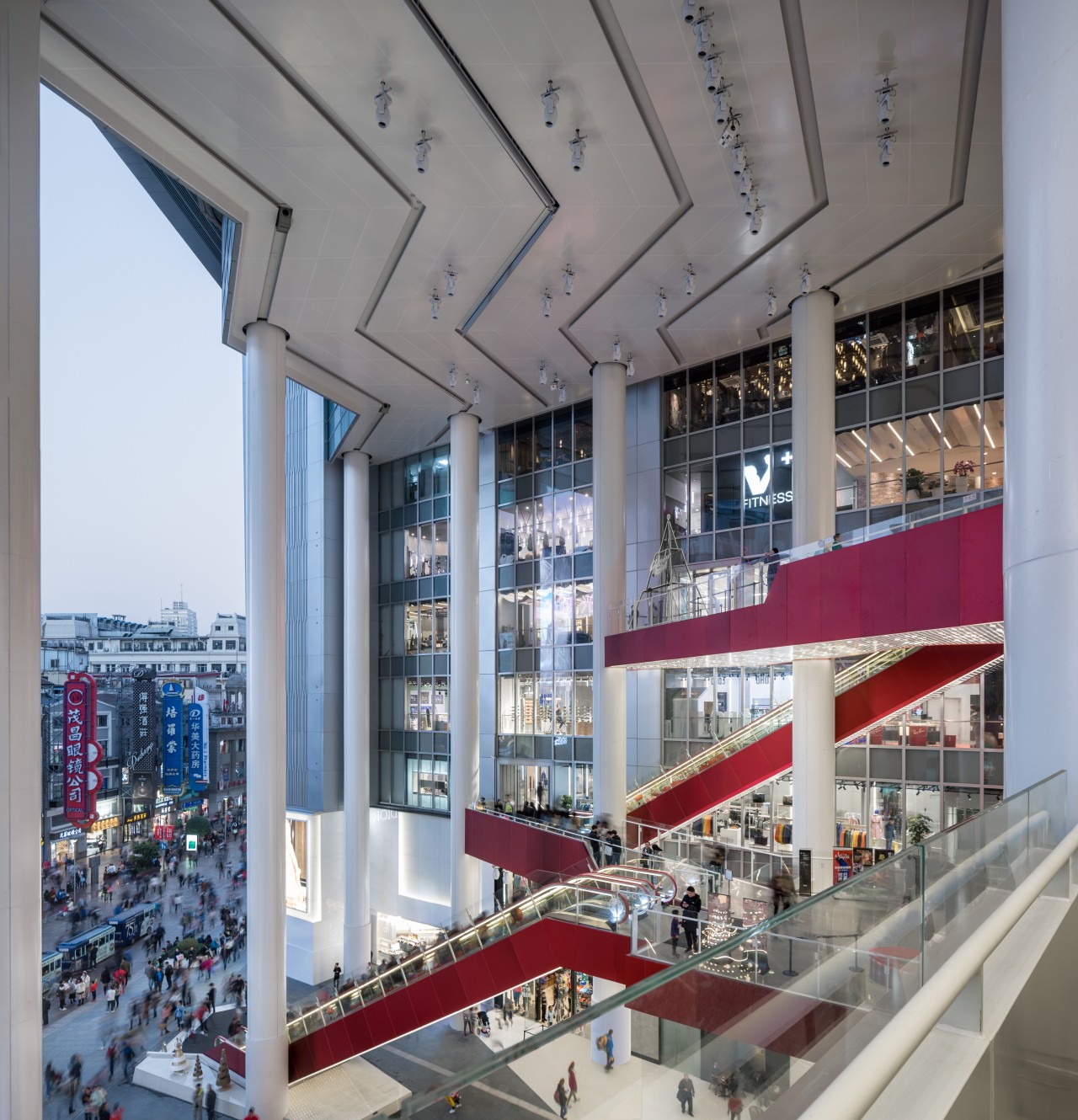
Created primarily with tourists in mind, the red carpet guides visitors on an experiential journey. All but circumnavigating the mall, it offers impressive views across adjacent landmarks. The high-profile escalators reinstate the original circulatory intention of the building, particularly with regard to its diagonal axis.
The eye-catching red escalators also see the mall’s role expand to that of tourist attraction, re-establishing it as a public space for enjoying all facets of Shanghai life - not just shopping.
In addition to softening the perimeter of the formerly enclosed mall, and physically reconnecting the architecture to its environs, the intervention repositions the mall’s focal point to its upper levels. Where previously access to the mall’s core was exclusively via its ground floor flagship stores, Kokaistudios’ solution transports visitors directly to its re-centred and newly opened-up third-floor foyer, bringing both energy and movement to the facility’s formerly under-visited upper levels.
Positioning the mall as a lifestyle destination that extends beyond retail was also key to attracting a second target demographic: Shanghai residents – imagined here as ‘audience’. As part of this, the renovated mall now features several high-end restaurants and bars on its fifth and sixth floors.
“With these destinations in mind, we created a new street-level entrance that opens onto an attractive atrium,” Destefanis says.
“Flanked with vertical wooden boards, seemingly extending the entirety of the mall’s height, and interspersed with LED columns, it lends light, openness, and drama to what was previously an under-optimised space.”
From here, banks of elevators take diners directly
to the F&B outlets, without need to navigate escalators.
Another entrance on East Nanjing Road caters to a third demographic, defined by Kokaistudios as actors and imagined as those working in nearby offices. In order to facilitate frequent, more convenient use of Shimao Festival City, an escalator conveys this group direct to the heart of the mall.
“Envisaged almost as a ‘backstage’ space, this second plaza sets an industrial tone through grey louvre walls, polished black glass.
“These elements combine to reinforce the space’s efficiency and purpose, and contrast with the mall’s more tourist-oriented outer areas.”
Kokaistudios’ project demonstrates how architectural renovation can serve cities by retrofitting outdated shopping malls with the lifestyle elements of now, and flexibility for the future. In this way, these large-scale structures can be absorbed back into the useful fabric of urban centres.
With Shimao Festival City, this translates to opening-up a formerly overlooked space in the heart of Shanghai for the benefit and enjoyment of all.
Credit list
Project
Project team
Project team
Construction
Cladding
General flooring
Paints
Lift and escalator services
Architect
Interior designer
Developer
Civil, mechanical and electrical engineer
Glazing system
Wallcoverings
General area ceiling panels
Story by: Charles Moxham
Photography by: Wu Qingshan
Home kitchen bathroom commercial design
Commercial Design Trends 35-2C
The world of hotel design is changing, with a move away from bland repetition of a chain’s design template to giving gue...
Read More



